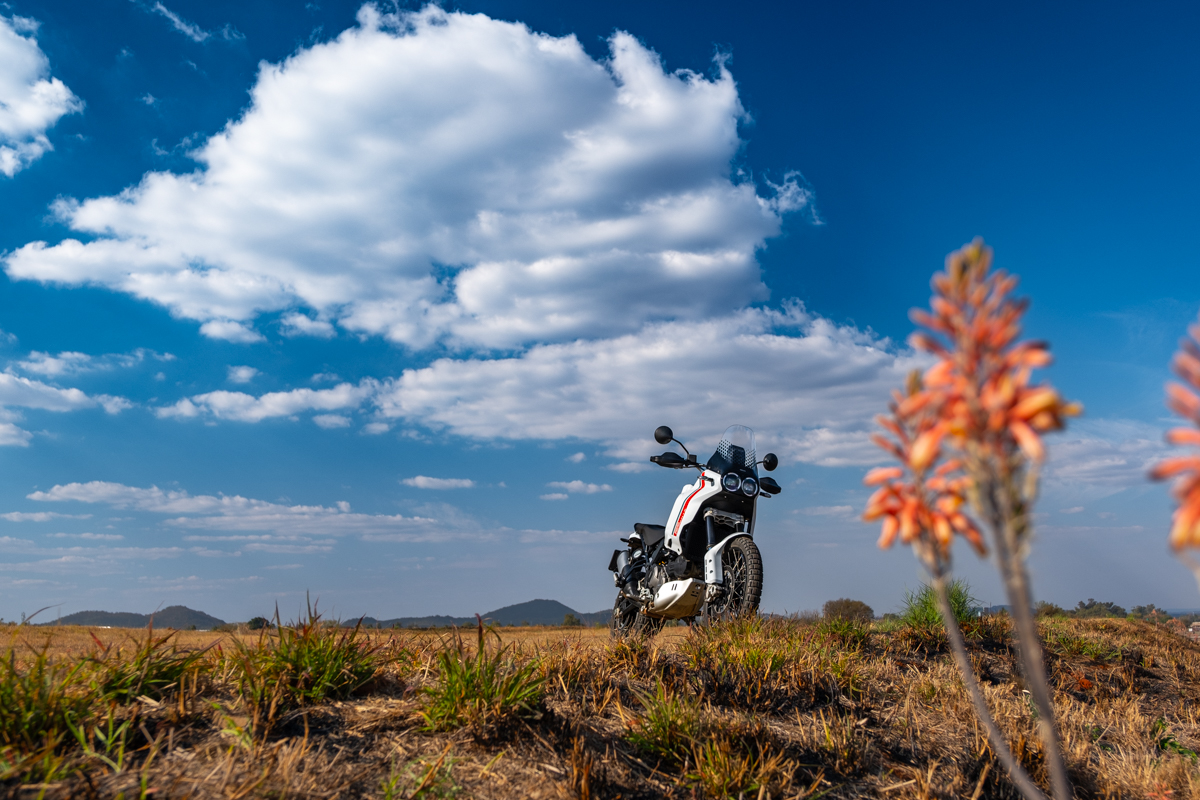
As a freelance motorcycle journalist, I get to ride a great deal of motorcycles. Some impress you before you even reach second gear. Others take a while longer to appreciate fully, almost like a fine wine. The Ducati DesertX, for me, falls into the latter category.
When the Ducati DesertX was launched, I knew I wanted to ride it, but due to shipping delays, I had to wait quite a while to finally swing a leg over. Now, if I am honest (as I should be) the bike underwhelmed me at first. Power and handling were not a problem, but minor things like the exposed wiring loom in the fairing looked out of place on a Ducati. On a bike in this price range, I don’t want to see the wires going to the indicators or read the part number of the headlight cluster from where I am sitting. Another thing was that the bike looked way too aggressive for my style of riding. Don’t get me wrong though, the DesertX is a gorgeous bike, but I am more of a Multistrada-type rider. I love the tarmac with the occasional gravel road thrown in. The DesertX looked every bit like the hardcore Enduro bike that it is, and I will probably never venture to the places this bike can take you.
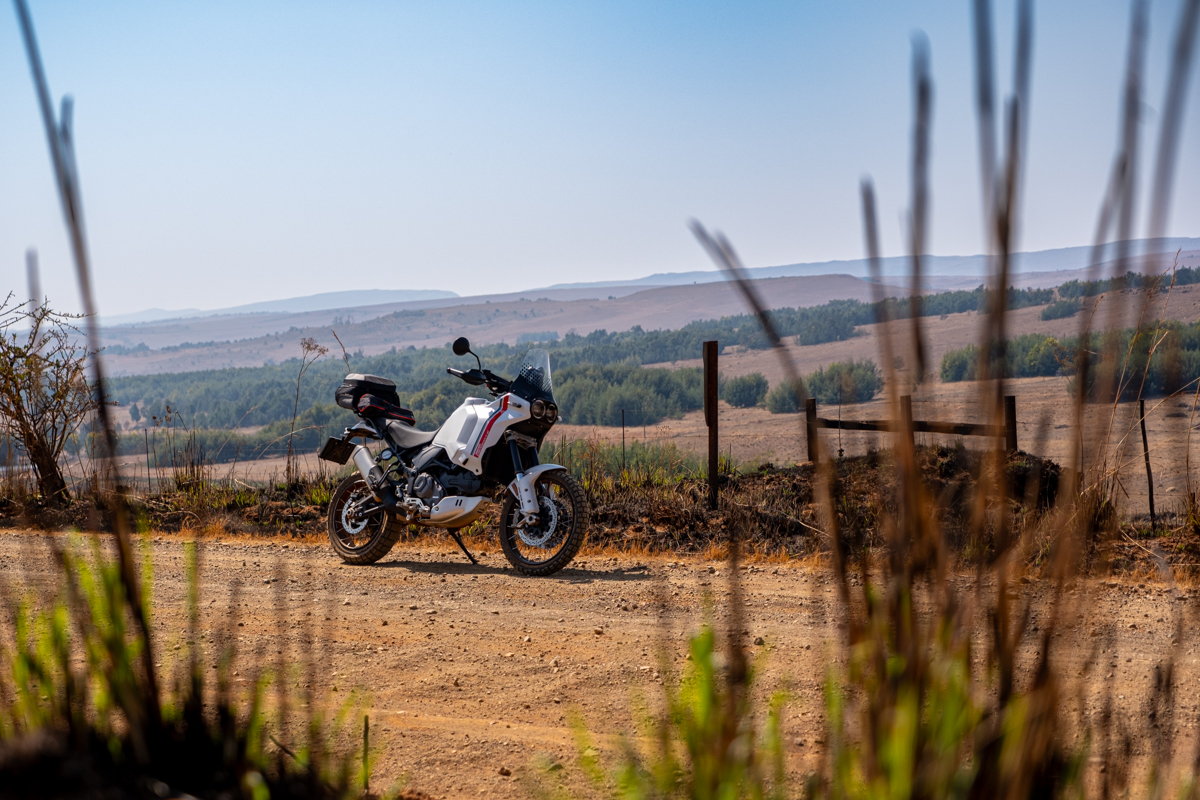
However, having had the bike in my garage for four months, I have really started to appreciate it, it has become my go-to bike, to the point that I am honestly thinking that this might be the only bike I would ever need. Has Ducati pulled off the perfect dual-sport bike?
With Ducati’s success in the MotoGP and WorldSBK Championships, we got accustomed to the fact that this is where Ducati excels: very fast road bikes. So, when they first revealed the DesertX concept way back in 2019, we all expected another Scrambler model, similar to the Desert Sled. In fact, the concept bike was based on a Scrambler platform. Nice red herring there, Ducati! What we got though, was a proper off-road machine, designed from the ground up, to compete against bikes like the Triumph Tiger 900 and the very popular Honda Africa Twin.
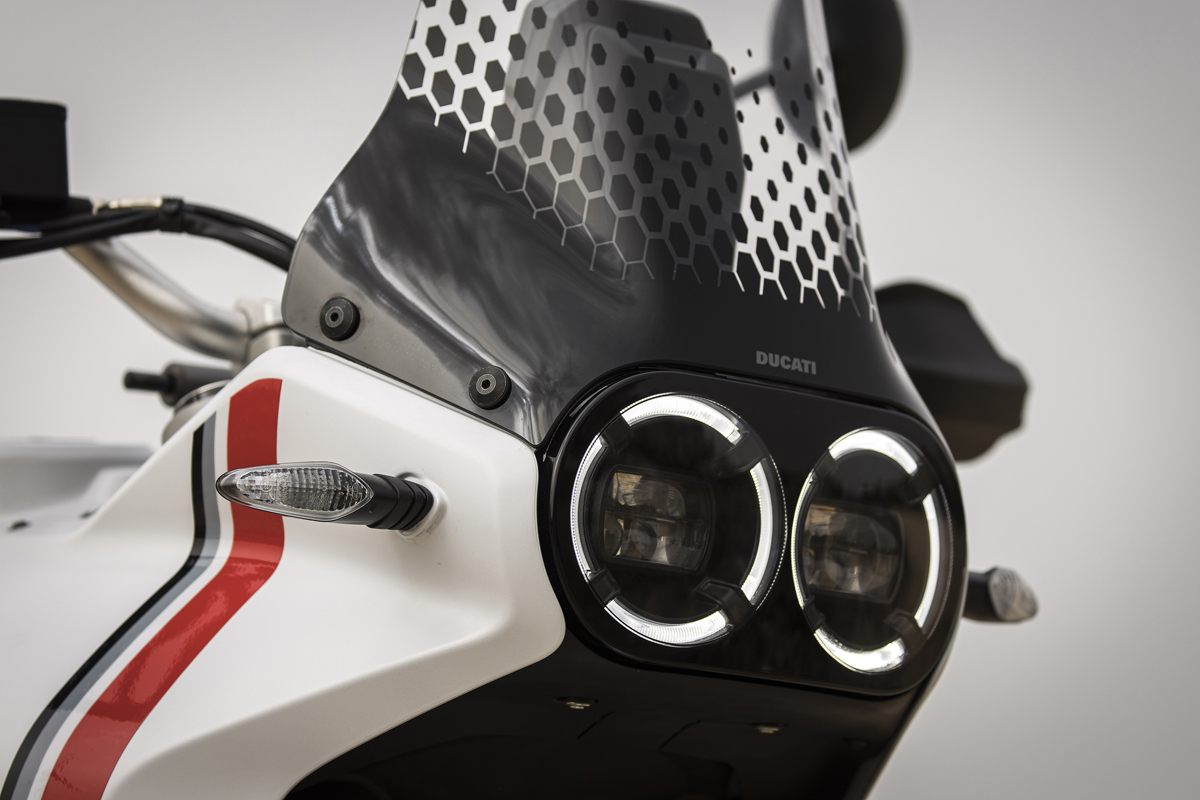
Ducati did their homework on the DesertX. Fortunately for them, they already had a peach of a motor in the 937cc Testastretta power plant. After doing duty in plenty of Ducati models to date, it finally found a home in a bike that compliments the engine perfectly. To round off the package, Ducati gave it a fly-by-wire throttle and all the electronics that make this bike so good. It has various rider modes for both road and off-road riding. They mated it to a six-speed gearbox with a quick-shifter, but they shortened the first 5 ratios to give you a proper shove off the line.
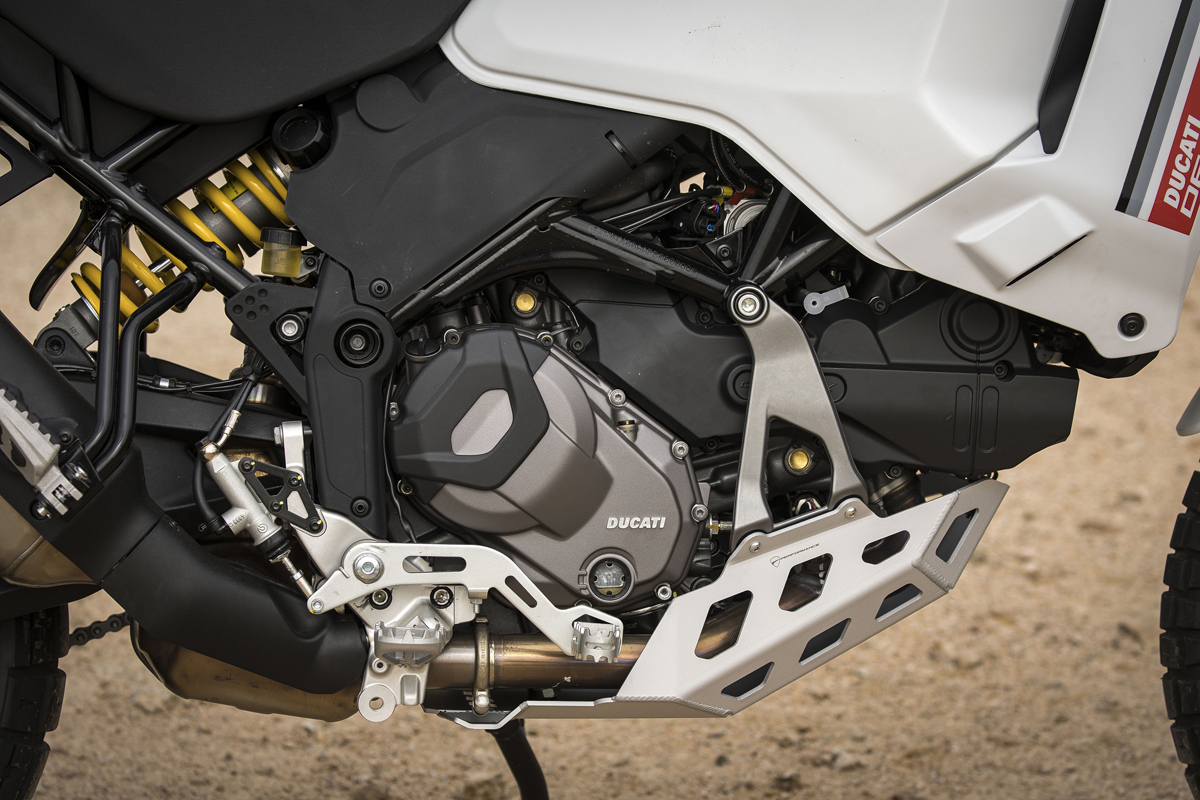
In Sport mode, it is pure Ducati magic, but I found the Touring mode the easiest to live with. The fuelling is spot-on and it makes the bike feel almost civil. In Urban and Rain modes, the engine power is dialled down to around the 95 hp mark, and the electronics kick in way earlier. Each of these modes can be individually tweaked to suit your particular riding style.
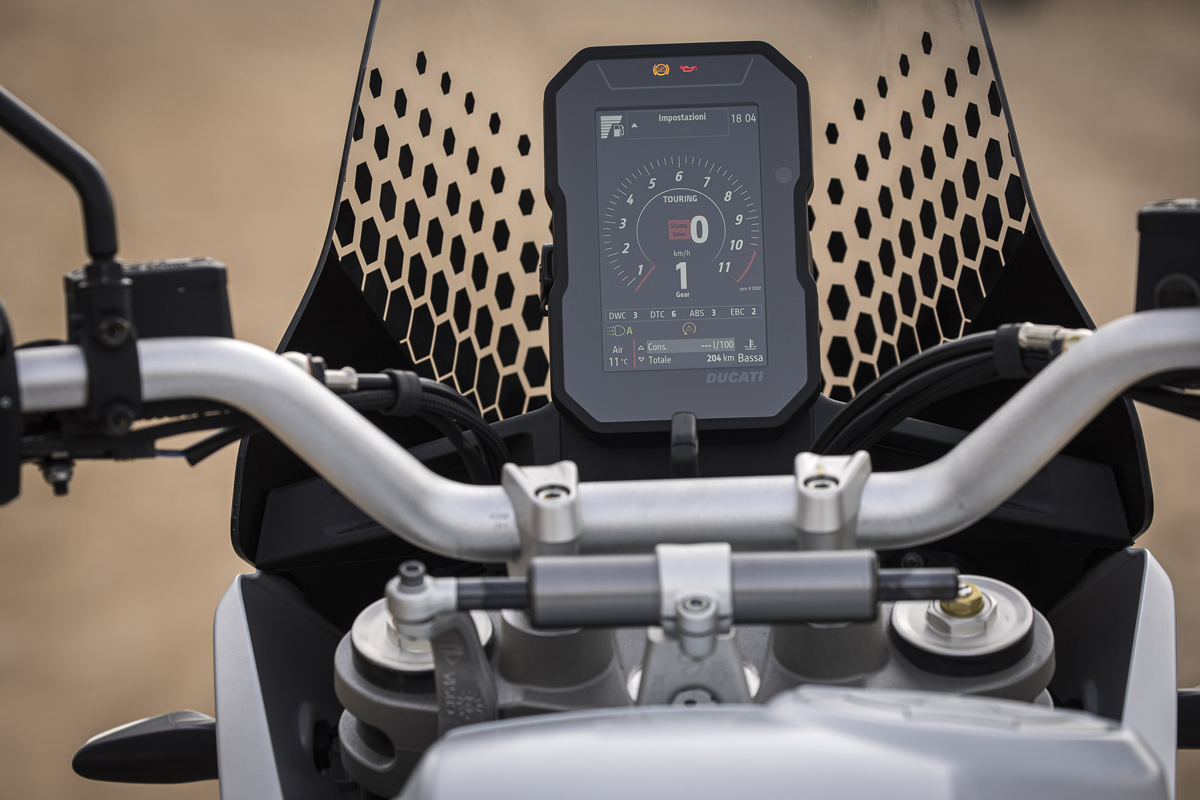
One thing I am grateful for is the fact that Ducati did not take shortcuts with this bike. They did not base it on the Scrambler, like the concept, nor did they just take a Multistrada and turn it into an enduro bike. They stuck to their guns to create a brand new bike and to make it a class leader, rather than an also-ran. They fitted a 21” front wheel to make its intentions clear. They fitted fully adjustable KYB suspension to satisfy even the pickiest of riders. The suspension offers generous travel – 230 mm in the front and 220 mm in the rear. To wrestle the DesertX to a stop, it is fitted with Brembo brakes front and back.
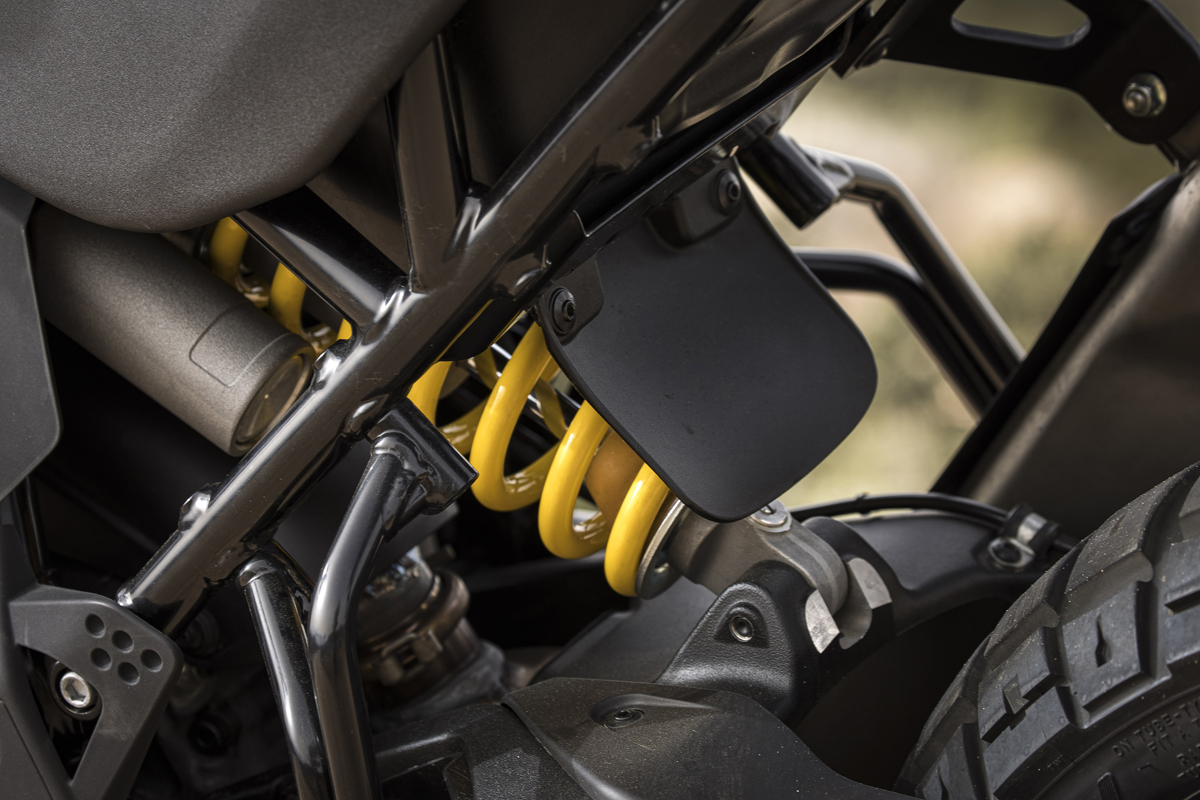
I love the twin headlights and the rugged look of the DesertX. The side profile does not do the bike any favours though. The massive 21-litre fuel tank is only accented with a sticker and leaves the rest of the tank like a big, white, canvas. Ducati has since released a black version of the DesertX too, and that does make the tank look less pronounced. The rear subframe is minimal at best, with a two-piece seat. The pillion seat can be removed altogether, and even here Ducati has added some detail. Under the pillion seat, Ducati has added ribs to the top of the fender and finished it off with a small logo of the Italian colours. This will make the ideal spot to strap down a few things if you travel solo, but, to be honest, it does make the bike look very awkward.
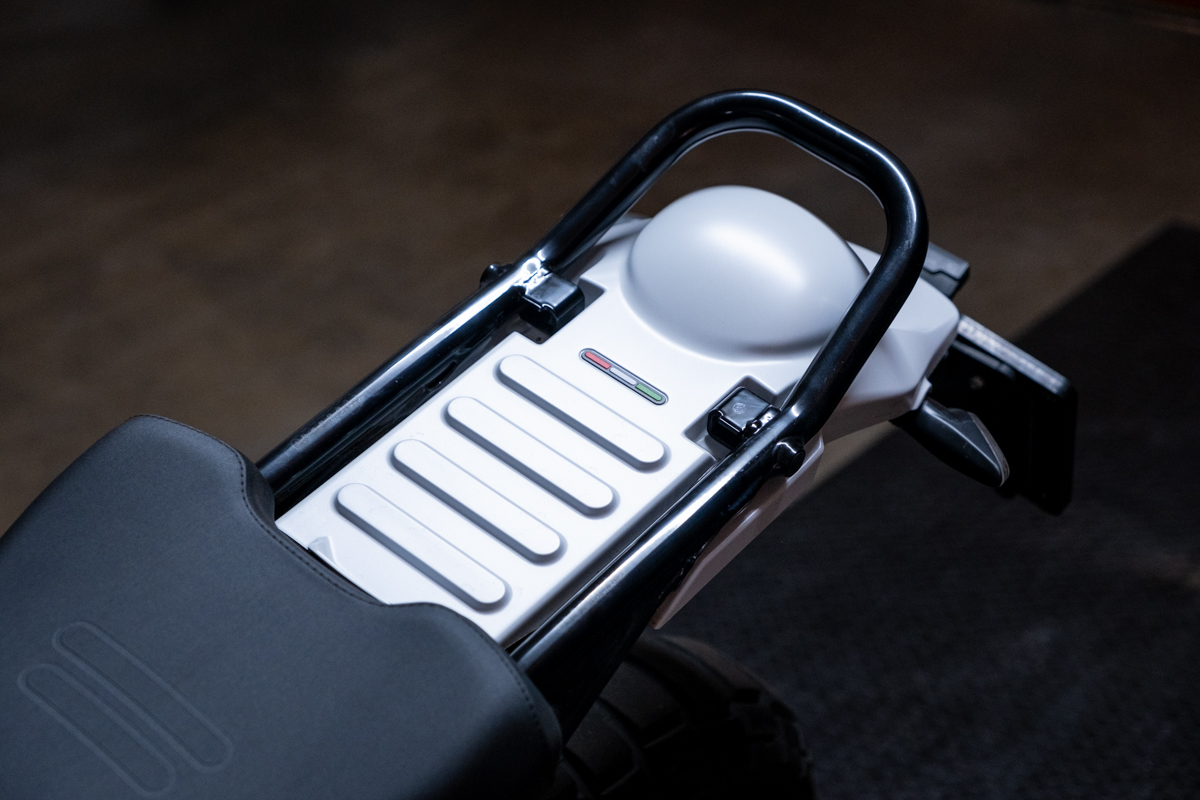
The seat of the DesertX is a very nice place to be. It tapers forward to allow you to get your feet flat on the ground. The handlebar is nice and wide and is even fitted with a steering damper. On the right handlebar, you have the usual start button and a button for the heated grips. Sadly, these don’t come as standard. On the left, I was happy to see the inclusion of cruise control. This is a welcome addition, especially for longer trips. This is also where you can set your rider modes.
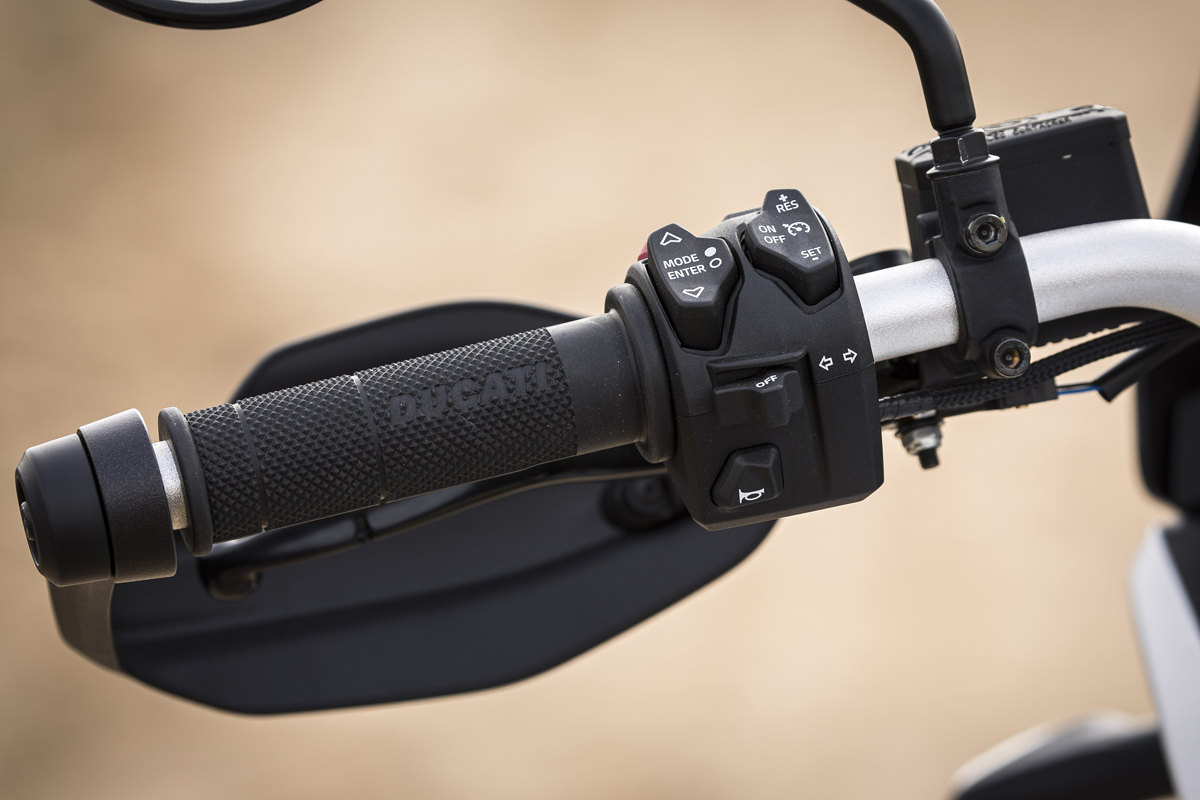
For the tarmac, I prefer the Touring mode, but when you do hit the gravel, the Enduro mode transforms the bike. This mode limits the power to around the 75 hp mark, and the rest of the electronics match the output perfectly. On gravel, the bike offers you just enough wheel spin, kept in check by just the right amount of interference. I am not fond of gravel roads, because I feel sorry for the bike, but the DesertX in Enduro mode just devours a gravel road.
On the last Mystery ride, we hit a fairly long gravel section and one of my fellow riders commented that they could see I was having a lot of fun. I don’t know if it was just the combination of the long wheelbase and the Pirelli Scorpion tyres, but I stood up and just opened up. The DesertX floated over the gravel. If you are experienced, or brave, you can switch to Rally mode, which gives you the full 110 hp, and pretty much all the other electronics switched off. You can also switch ABS off completely at the press of a button.
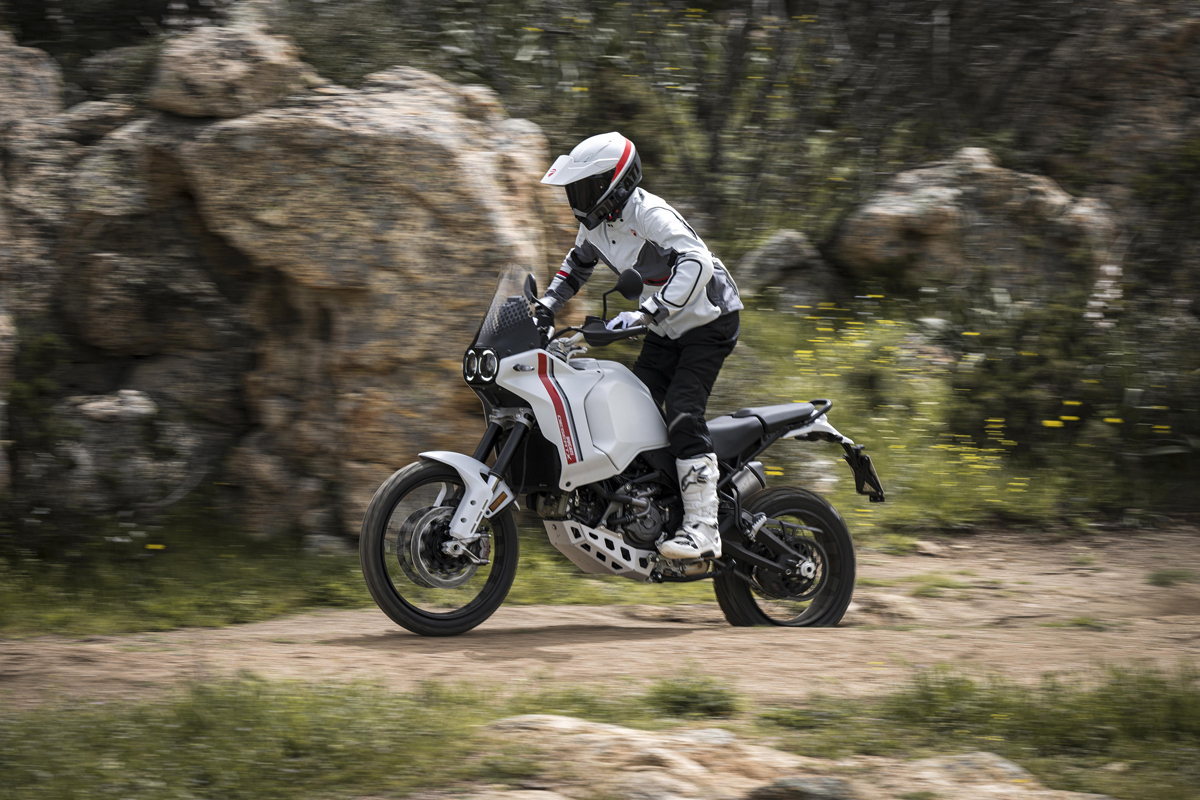
As with any bike that has to fulfil two roles, you would assume the DesertX would be lousy on the tarmac when it is that good on gravel. Well, you would assume incorrectly. Somehow, Ducati managed to apply their road bike know-how to the DesertX and delivered a bike that can keep up if the pace gets frantic. When pushing on, it turns in a bit slower than a road bike would, but not nearly as bad as you would expect from a 21” front wheel. The Pirelli Scorpion tyres are also surprisingly good on the grey stuff. Let’s just say that on dirt, or tar, I will run out of talent way before the bike does.
The nonadjustable screen does create a bit of buffeting, but that can be addressed by fitting a taller screen. As with any bike, the accessory catalogue is quite extensive. My first modification would be to fit crash protection. If you are going to ride this bike anywhere near what it is capable of, you are going to drop it, so crashbars are a must. If long distances are your thing, then Ducati can fit an auxiliary tank under the pillion seat that adds another 8 litres to the fuel capacity.
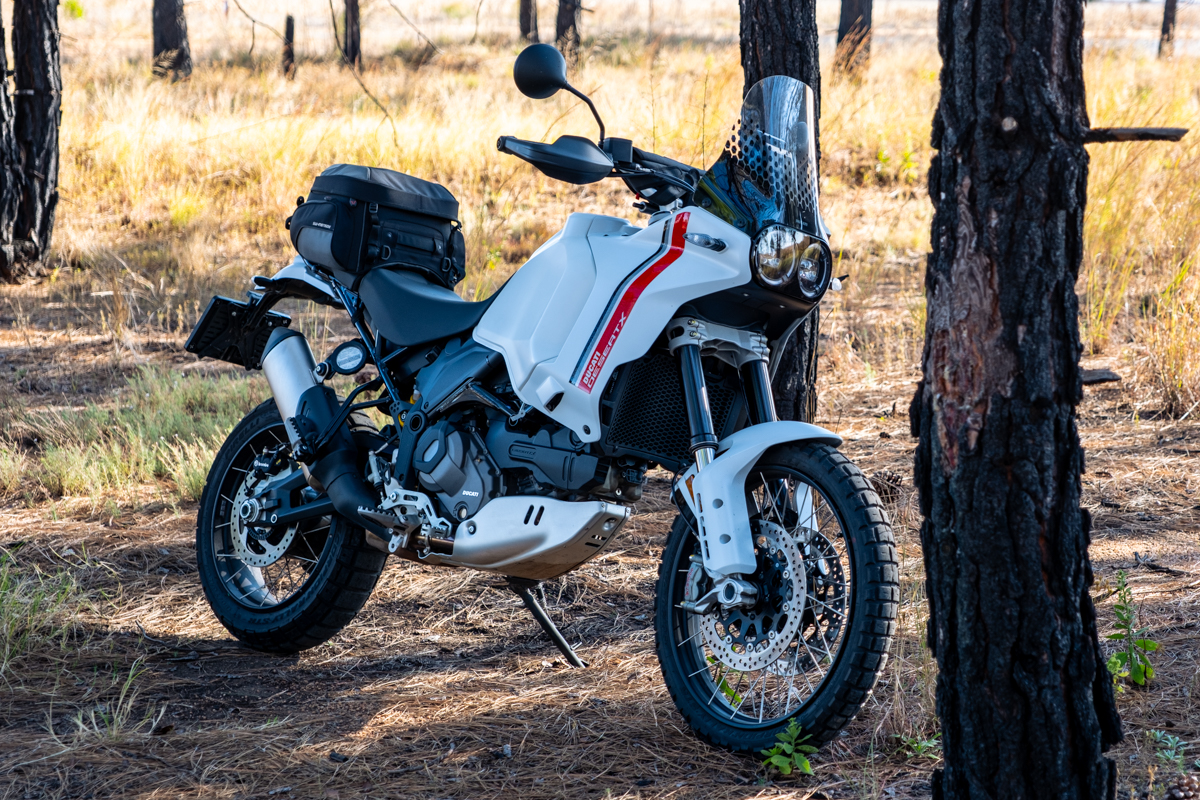
As much as I had my initial reservations about the DesertX, spending time with it has made me grow attached to it. I want to keep it, as it is a bike that does it all. Ducati has designed the DesertX with intent and it is really a well-thought-out bike. It is truly a do-it-all bike, but it does come with a small caveat. If you like to travel at high speeds for hours on end to get to your destination, this is probably not the bike for you. The DesertX is more about the journey than the destination. It can do the high speeds, but the DesertX is happiest just above the speed limit. And there you can sit all day, irrespective of the road surface. I took it out to Tonteldoos one Saturday, taking highways, dodging potholes on secondary roads and riding a rutted, technical gravel section. The bike took it all in its stride.
One of my friends rides a GS, and he summed it up nicely when he took the Ducati for an extended run one afternoon. When he came back, he stopped in my garage and lingered for a while. After a minute or so, he said: “This is a bike I cannot describe without swearing. It is that good.”
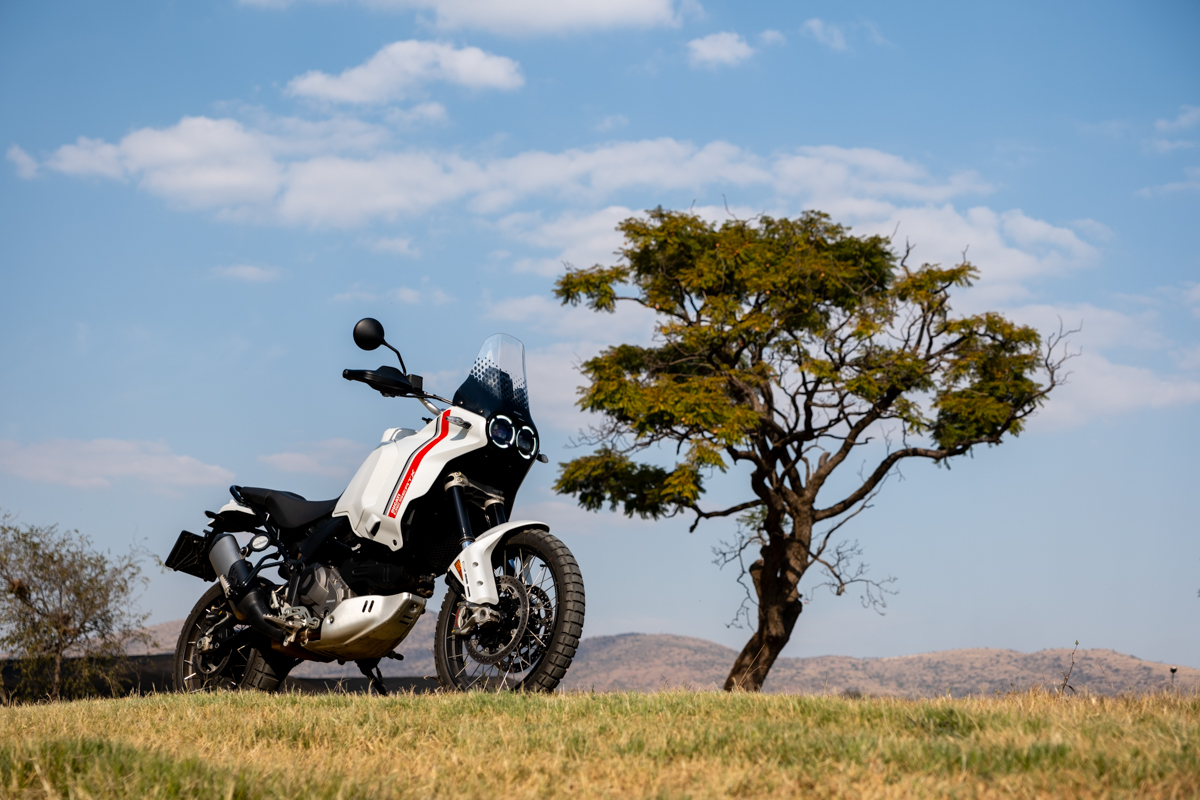
Ducati Desert X
For more information on the bike featured in this article, click on the link below…





